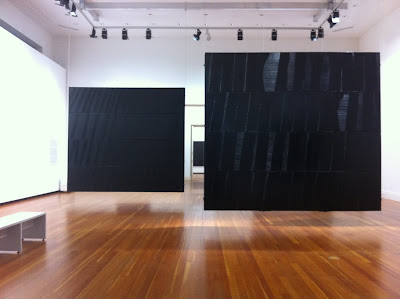
The other day I ventured to Martin-Gropius-Bau. On my way in a taxi, I passed Checkpoint Charlie. A large portrait of an America soldier hangs in the center of the street along with a more official sign marking the landmark. The image is stark and quite beautiful and such a relevant reminder of Berlin’s past. Entering the museum, I chose a dual entry ticket for artists Laszlo Moholy-Nagy-The Art of Light and Pierre Soulages respectively. The image above, Leda and the Swan, is by Moholy-Nagy c.1925.

Much of the art I have seen in Berlin has made reference to German theorist Walter Benjamin and this show did as well; The Work of Art in the Mechanical Age of Reproduction, 1936. Moholy-Nagy was a multi-disciplanary artist at the age of Modernism. His work is representative of documentation of place as well as a reflection of Bauhaus and the engineered. He was interested in a pedagogy not only towards others but also in regards to reworking the internal through actual and theoretical practice to a “new, total human being”.

Pierre Soulages, b. 1919 in Rodez, France, is a painter I was surprised to have never heard of. His paintings are large scale and compositional studies in black. He’s interested in the light that exudes off of a black surface and plays with stroke and directional layers to control the interaction between the viewer and the canvas.

I particularly enjoyed the installation and canvases that were hanging back to back in space becoming both about paint and sculpture.

In the large cavernous hall of the museum (where Olafur Eliasson had an exhibit this past year) is a monumental installation of objects. From behind the silouettes appear through a veil of light and shadow. Passing to the front of the work, the recognizable forms emerge in a warm, sultry light. The piece appears to be about time, humanity and the recollection of memory through objects.
More soon!
xo
Posted using iPhone 4
www.katyhamer.com

